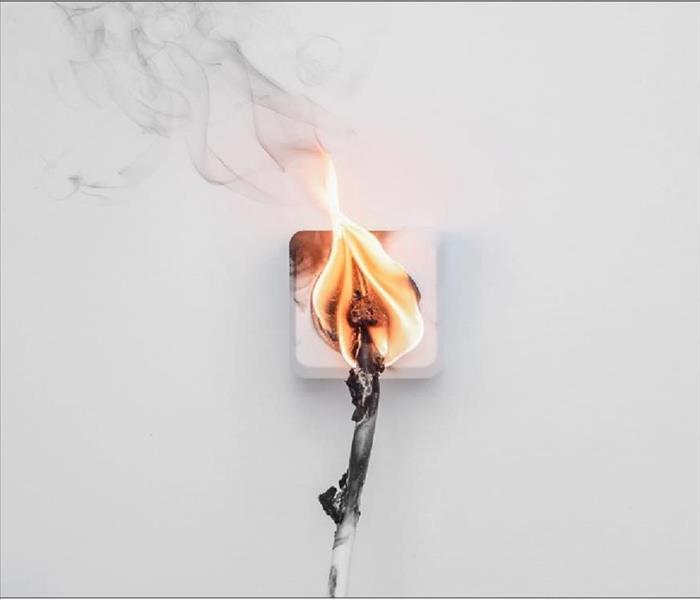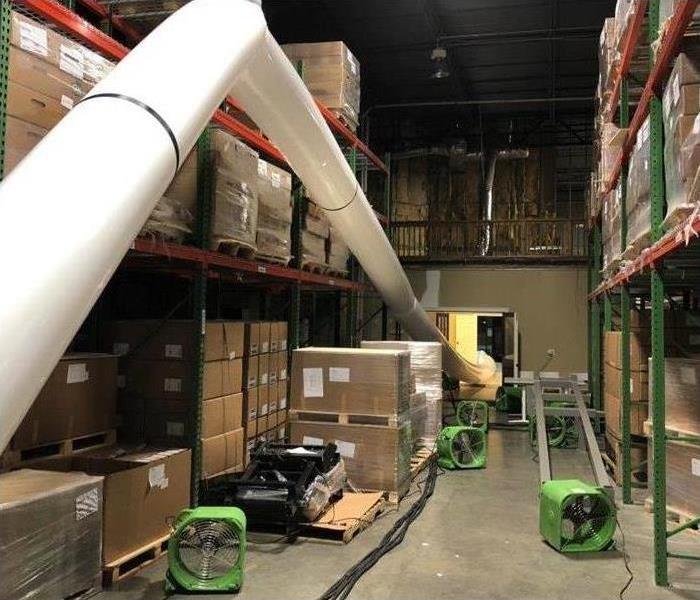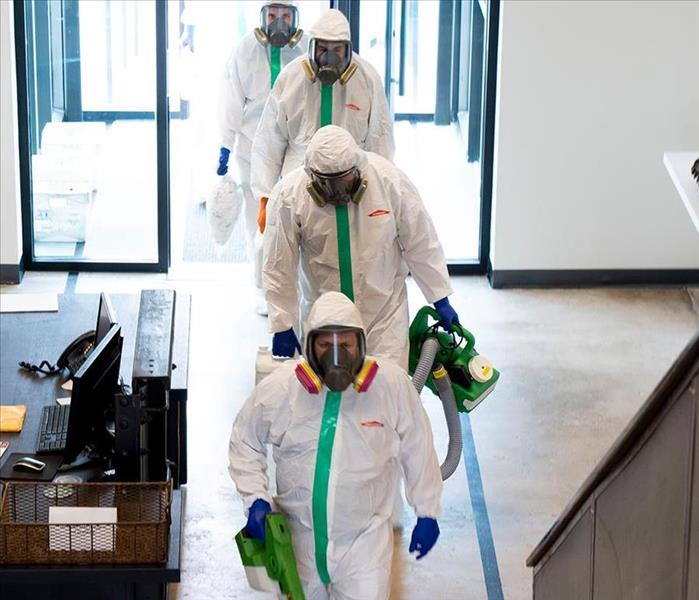Recent Posts
Water Damage Restoration: Essential Tips for Muskogee Homeowners
8/5/2024 (Permalink)
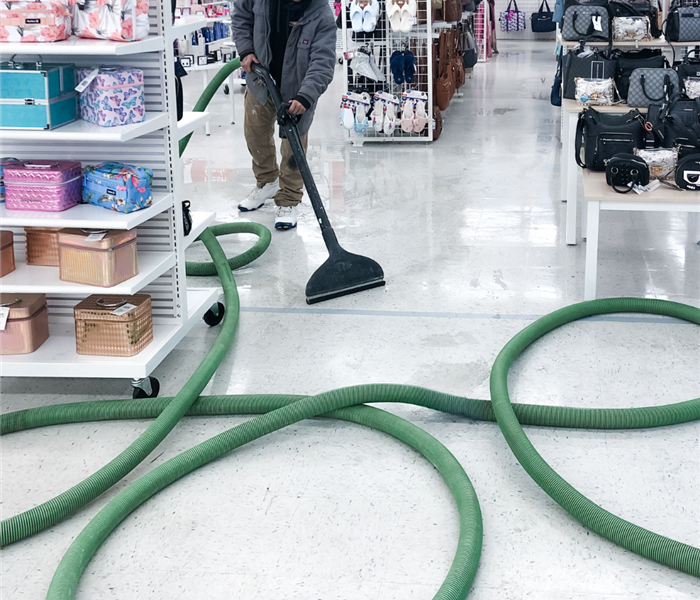 SERVPRO of Muskogee/McIntosh Counties & Tahlequah offers 24/7 water damage restoration services.
SERVPRO of Muskogee/McIntosh Counties & Tahlequah offers 24/7 water damage restoration services.
Water damage can strike at any time, causing significant stress and disruption to your home or business. At SERVPRO of Muskogee/McIntosh Counties & Tahlequah, we understand the urgency and importance of addressing water damage promptly. Here are some essential tips for homeowners to help mitigate water damage and ensure a swift restoration process.
Immediate Steps to Take When Water Damage Occurs:
Ensure Safety First:
- If it’s safe to do so, turn off the water source to prevent further flooding.
- Avoid electrical hazards by turning off the power in affected areas.
- Keep children and pets away from the affected area.
Remove Excess Water:
- Use mops and towels to remove as much standing water as possible.
- If you have access to a wet/dry vacuum, use it to extract water from carpets and floors.
Protect Valuables:
- Move valuable items, such as electronics, documents, and photographs, to a dry area.
- Place aluminum foil or wooden blocks under furniture legs to prevent further water damage.
Ventilate the Area:
- Open windows and doors to promote air circulation and drying.
- Use fans and dehumidifiers to help reduce moisture levels.
When to Call the Professionals:
While immediate actions can help mitigate some damage, it’s crucial to call the professionals at SERVPRO of Muskogee/McIntosh Counties & Tahlequah for thorough water damage restoration. Our team is available 24/7 to provide expert assistance and ensure your property is restored quickly and efficiently.
Need Emergency Service? Call Us 24/7 – 888-601-5526
Our Water Damage Restoration Process:
Inspection and Assessment:
- We conduct a detailed inspection to determine the extent of the water damage and develop a comprehensive restoration plan.
Water Removal:
- Using advanced equipment, we extract all standing water from your property to prevent further damage.
Drying and Dehumidification:
- Our team uses industrial-grade dehumidifiers and high-speed air movers to dry affected areas thoroughly.
Cleaning and Sanitizing:
- We clean and sanitize all salvageable items and surfaces to ensure your property is safe and healthy.
Restoration:
- We repair and restore your property to its pre-damage condition, making it "Like it never even happened."
Why Choose SERVPRO®?
- We are a preferred vendor for many national insurance companies.
- We bill the insurance directly, so you have one less thing to worry about.
- Our technicians are highly trained in water damage restoration techniques.
- We use advanced inspection and extraction equipment.
By following these steps and contacting SERVPRO of Muskogee/McIntosh Counties & Tahlequah, you can ensure a swift and efficient restoration process. Our team is dedicated to providing top-notch service and helping you get back to normal as quickly as possible.
For more tips and updates, visit our website or follow us on Facebook. Stay safe and prepared!
Fire Damage Restoration: Critical Steps for Muskogee Homeowners
8/5/2024 (Permalink)
Experiencing a fire in your home or business can be devastating and overwhelming. At SERVPRO of Muskogee/McIntosh Counties & Tahlequah, we understand the emotional and physical toll fire damage can take. Our team is dedicated to helping you restore your property quickly and efficiently. Here are some critical steps homeowners can take immediately following a fire to ensure safety and begin the restoration process.
Immediate Steps to Take After a Fire:
Ensure Safety First:
- Wait for the fire department to declare your property safe before re-entering.
- Be cautious of potential structural damage and hazardous materials.
Contact Your Insurance Company:
- Notify your insurance company about the fire and begin the claims process.
- Document the damage with photos and detailed notes to support your claim.
Secure the Property:
- If necessary, board up windows and doors to prevent further damage or unauthorized entry.
- Consider installing temporary fencing around the property for added security.
Remove Valuables and Personal Belongings:
- Carefully retrieve important documents, valuables, and personal items if it is safe to do so.
- Store these items in a secure location away from the damaged area.
When to Call the Professionals:
While some initial steps can help mitigate damage, it’s crucial to contact the professionals at SERVPRO of Muskogee/McIntosh Counties & Tahlequah for comprehensive fire damage restoration. Our team is available 24/7 to provide expert assistance and ensure your property is restored efficiently and safely.
Need Emergency Service? Call Us 24/7 – 888-601-5526
Our Fire Damage Restoration Process:
Inspection and Assessment:
- We conduct a thorough inspection to determine the extent of the fire damage and develop a tailored restoration plan.
Board-Up and Tarp Services:
- To prevent further damage, we provide board-up services for windows and doors and tarping for damaged roofs.
Water Removal and Drying:
- If water damage is present from firefighting efforts, we use advanced equipment to extract water and thoroughly dry affected areas.
Smoke and Soot Removal:
- We employ specialized techniques and equipment to remove smoke and soot from walls, ceilings, and other surfaces.
Cleaning and Sanitizing:
- Our team cleans and sanitizes all restorable items and structures to ensure a safe and healthy environment.
Restoration:
- We handle all necessary repairs and reconstruction to restore your property to its pre-fire condition, making it "Like it never even happened."
Why Choose SERVPRO®?
- We are a preferred vendor for many national insurance companies.
- We bill the insurance directly, so you have one less thing to worry about.
- Our technicians are highly trained in fire damage restoration techniques.
- We use advanced equipment and technology for efficient and effective restoration.
By taking these steps and contacting SERVPRO of Muskogee/McIntosh Counties & Tahlequah, you can ensure a thorough and efficient restoration process. Our team is dedicated to providing top-tier service and helping you recover from the aftermath of a fire.
For more tips and updates, visit our website or follow us on Facebook. Stay safe and prepared!
Tips for Homeowners: Preparing for Storm Season in Muskogee
8/2/2024 (Permalink)
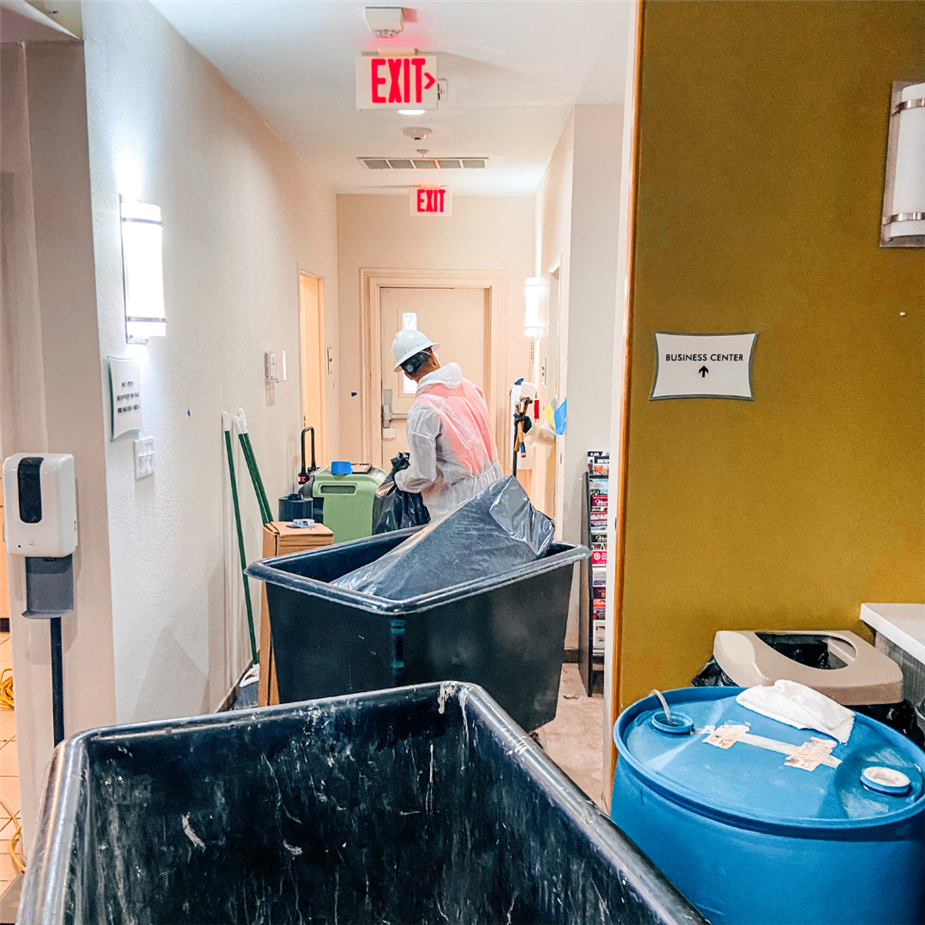 SERVPRO of Muskogee/McIntosh Counties & Tahlequah employee in action, expertly restoring a facility, making it "Like it never even happened".
SERVPRO of Muskogee/McIntosh Counties & Tahlequah employee in action, expertly restoring a facility, making it "Like it never even happened".
As storm season approaches, it’s crucial for homeowners in Muskogee and surrounding areas to be prepared for potential weather-related emergencies. At SERVPRO of Muskogee/McIntosh Counties & Tahlequah, we specialize in storm damage restoration and are committed to helping our community stay safe and protected.
Here are some essential tips to prepare your home for storm season:
Inspect Your Roof and Gutters: Ensure your roof is in good condition and free of loose or damaged shingles. Clean out gutters and downspouts to prevent water from backing up and causing damage.
Trim Trees and Shrubs: Overhanging branches can cause significant damage during a storm. Trim trees and shrubs away from your home and power lines to minimize the risk.
Secure Outdoor Items: Bring in or secure outdoor furniture, decorations, and tools that could become projectiles in high winds.
Check Your Sump Pump: Ensure your sump pump is working correctly and consider installing a battery backup in case of power outages.
Create an Emergency Kit: Assemble an emergency kit with essentials such as water, non-perishable food, flashlights, batteries, a first-aid kit, and necessary medications.
Review Your Insurance Policy: Confirm that your homeowner’s insurance policy covers storm damage and understand the steps for filing a claim.
Need Emergency Service? Call Us 24/7 – 888-601-5526
At SERVPRO of Muskogee/McIntosh Counties & Tahlequah, we provide 24/7 emergency storm damage restoration services. Our team is equipped with the latest technology and expertise to handle any storm-related damage, ensuring your home is restored quickly and efficiently.
Why Choose SERVPRO?
- We are a preferred vendor for many national insurance companies.
- We bill the insurance directly, so you have one less thing to worry about.
- Our technicians are highly trained in storm damage restoration techniques.
- We use advanced inspection and extraction equipment.
By following these tips and preparing in advance, you can protect your home and loved ones during storm season. If disaster strikes, remember that SERVPRO of Muskogee/McIntosh Counties & Tahlequah is here to help you recover and restore your property, making it "Like it never even happened."
For more tips and updates, visit our website or follow us on Facebook. Stay safe this storm season!
Electrical Fires
7/21/2023 (Permalink)
Houses go up in flames in about three minutes, eight times faster than they would have 50 years ago. By the time you see the fire, it’s too late to do anything but evacuate.
Having an emergency plan in place is crucial for times like these. Most do not know that water is a huge no-no for electrical fires, can increase your risk of electrocution, and will do nothing to safely smother the fire.
You may not see signs of an electrical fire in your home or business, but the following problems put you at risk.
1. You Have Damaged or Old Wiring
2. Lights Dim for No Reason
3. Use a Lot of Power Bars and Extension Cords
Also, beware if your breakers keep tripping, or if there are charred, discolored outlets and switches, you may need to take precautions to assure your home or property is safe and properly wired.
SERVPRO of Muskogee/McIntosh Counties & Tahlequah are a leading fire damage restoration company and we specialize in removing water after the firefighting efforts, especially following an electrical fire. Our professionals assess the damage and handle the cleanup and restoration process from to start to finish. We even perform smoke and odor removals to assure we make your business or residence "Like It Never Even Happened."
Call us today for a FREE Estimate!
Large Loss Division
7/20/2023 (Permalink)
Our elite large-loss specialists are pre-qualified and strategically positioned throughout the United States to handle any size disaster.
Every large loss is supervised by a commercial operations manager to help ensure seamless communication and timely mitigation. The rate at which things move with ease and precision is unparalleled.
The SERVPRO of Muskogee/McIntosh Counties & Tahlequah's advantage is our ability to dispatch trained production professionals and cut costs through the strategic placement and oversight of temporary labor. Our team is massive and can be readied quickly to save you time!
Clients for the Commercial Large Loss program include the following:
- The Hospitality Industry
- Property Managers
- Universities
- Municipalities
- Healthcare Facilities
- Food Service
- Retail
- Entertainment Venues/Casinos
HELPING TO MAKE FIRE AND WATER DAMAGE “Like it never even happened.”
Large Format Drying Equipment
7/19/2023 (Permalink)
When a water line breaks in your home or business, it's only a matter of seconds before the water starts causing serious damage. Once SERVPRO of Muskogee/McIntosh Counties & Tahlequah removes the excess water, the floors and walls may appear dry, a quick inspection will reveal they are wet to the touch. Our Professionals will use room measurements, temperature, and relative humidity to determine the optimal number of air movers and dehumidifiers to dry your property. We’ll carefully monitor the progress using moisture meters until the materials return to acceptable drying goals. Professional and Industrial-grade dehumidifiers are used and help prevent secondary water damage like swelling and warping of floors, walls, and furniture. High-speed air movers are also utilized to create airflow across walls, carpets, pads, and furniture, which accelerates the evaporation of moisture.
Need Emergency Service?
Call Us 24/7
918-913-4490
We're always "Here to Help"
Specialty Cleaning Services
7/14/2023 (Permalink)
When was the last time your home or business was deep cleaned? SERVPRO of Muskogee/McIntosh Counties & Tahlequah understands maintaining a clean environment takes constant work and we are up for the job! Our certified technicians have the tools it takes to handle all your specialty cleaning projects. Most cleaning companies only have a couple of cleaning methods, but SERVPRO incorporates a variety of methods to assure your home, business, or property is properly cleaned and it looks "Like it Never Even Happened".
When we say SERVPRO cleans, we mean, carpet/upholstery cleaning, drapes/blinds/window treatments, ceiling/floors/walls, HVAC/air duct cleaning, biohazard/crime scene cleanup, document restoration, odor removal, vandalism/graffiti, and COVID-19 cleanings. Let us know if you think of anything else we can clean for you, we are always Here to Help.
Don't Let Heavy Rains Cause Sewer Backup
7/20/2022 (Permalink)
When there are heavy rains, an abundance of water and debris end up in municipal sanitary sewers, which can overload the sewer system. When there is more water than the sewer system can handle, excess water can flow backward into your home's sewer line and subsequently overflow into your basement. This is extremely common in our area.
Growing tree roots may pose another danger to your sewer line after storms. Tree roots may grow quickly over the summer months due to the increase in rain. Tree roots can pierce the pipes as they search for nutrients found in sewage. Within the system, roots continue to grow and may cause broken or blocked pipes.
Signs of a Clogged Sewer Pipe
- Slow drainage in toilets, showers, or sinks
- Bubbling noise as you flush toilets or shower/sink drains
- Another drain backs up when you flush toilets
- The smell of sewage (rotten eggs or sulfur)
- Lush, green spots in your yard above the septic tank or broken pipes
Sewer backups should be considered an emergency since the water may contain viruses, bacteria, and other microbes that can cause serious illness. SERVPRO of Muskogee/McIntosh Counties & Tahlequah has the specialized training and equipment to quickly and safely clean contaminants like sewage. We are available 24 hours a day, 365 days a year.
Large Format Drying Equipment
7/20/2022 (Permalink)
While all jobs are treated with the same importance, whether it is your Grandma's basement or you kid's Elementary School, not all jobs can be done with the same equipment. This is why at SERVPRO of Peoria we have specialized large format drying equipment to tackle large commercial jobs.
While we still use a lot of the same air movers, dehumidifiers, negative air machines, etc. there is other equipment we add for these large jobs. This equipment includes large trailer mounted generators, as well as large trailer mounted desiccant dehumidifiers.
This allows us to rapidly speed up the drying process in situations where time means everything. Often times, these commercial structures are large office spaces, factories, hospitals, schools, and many others facilities. All of them need to be open as quickly as possible, and our team uses our resources to make that happen.
If you have a loss at your facility, call SERVPRO of Muskogee/McIntosh Counties & Tahlequah at 918-913-4490 and allow us to get you back to pre loss condition as quickly as possible.
Back to School Safety Preparedness
7/19/2022 (Permalink)
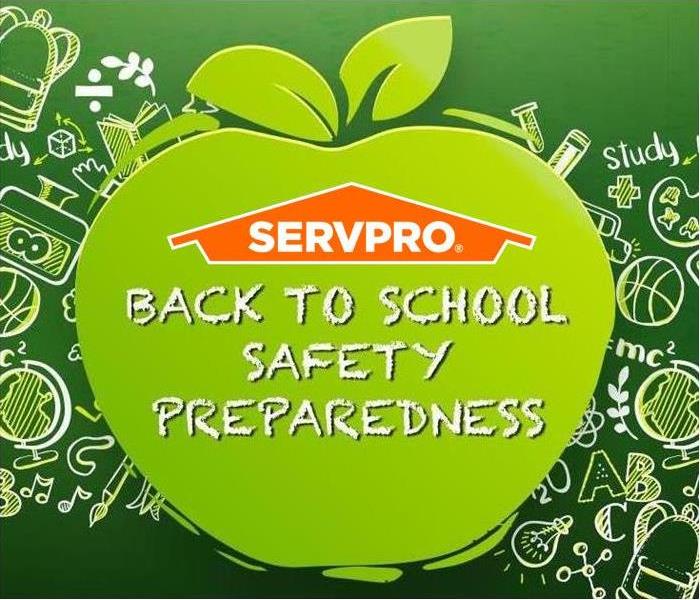 SERVPRO is Here to Help
SERVPRO is Here to Help
Each new school year brings its own set of changes and challenges for parents, guardians, and children. As a parent or guardian, you may be trying to figure out of modes of transportation and schedules for your young one. Your child, on the other hand, maybe worrying about who they’ll sit with at lunch or if they’ll have classes with any of their friends.
These are all common and worthy worries, however, there is one important precaution that is often overlooked: an emergency preparedness plan. Below are a few tips to help you plan in case of an emergency
- Teach your child what to do in case of a fire: get low to avoid smoke inhalation or feeling doorknobs for heat before opening them. Have a fire escape plan in place.
- Have a designated meeting place outside of your home
- Designate a person (preferably not local who may be affected by the same disaster) that everyone can call if you are separated.
- Practice drills!
- Put together a first aid kit with enough food and supplies to last you a few days. Here is a link for what should be in the kit
- In the event of an active shooter, teach your child to “run, hide, fight.” Click here more information about what to do in the event of an active shooter.
- Teach children how to call 911
- If you’re unable to pick up your child from school, establish a pre-discussed “password” for the person that will be picking them up.
- Always familiarize yourself with the school’s emergency and lockdown plans and procedures.
- If your child requires any medication, have extra doses stored in the nurses’ office in case they may have to spend the night at the school.
Disasters can happen at any moment. Preparedness is the key to ensuring you and your family make it out safely. While SERVPRO of Muskogee/McIntosh Counties & Tahlequah is “ready for any sized disaster” we want to make sure you are too.
For additional information, check out the resources below:
FEMA - Preparing Children for Disasters
Preparing Kids for Natural Disasters






 24/7 Emergency Service
24/7 Emergency Service


